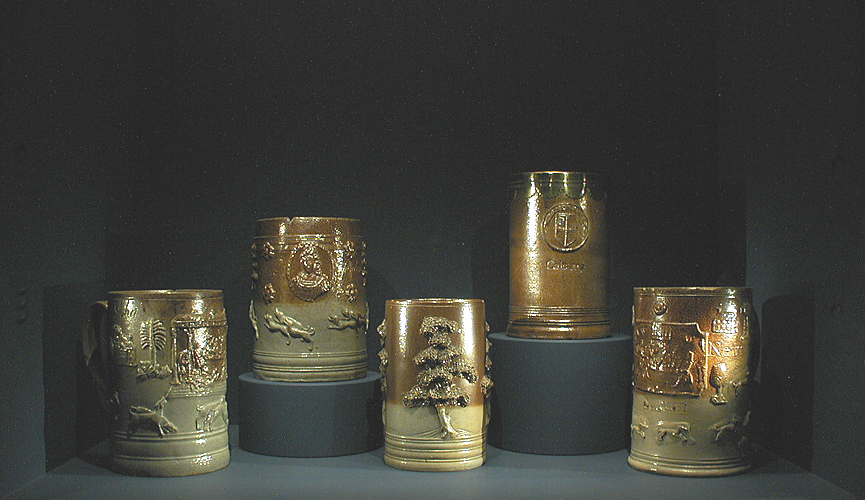
An honest Vicker, and a
kind consort,/ That to the alehouse friendly would resort,/ To have a game
at Tables now and then,/ Or drinke his pot, as soone as any man.
Humors Ordinarie, 1607
The alehouse tankard, of pint or quart size in the seventeenth century, was
made appreciably larger in the eighteenth century when more durable English
brown stonewares became available. Hitherto, large drinking vessels had been
made of pewter, which was expensive, or pitch-coated leather, which was hard
to keep clean.
Because they were decorated and often dated, many eighteenth-century large
tavern tankards have survived, whereas the smaller unadorned sizes have not.
Many of the big tankards bear the names of the inns and taverns for which
they were made. Until about 1750, inscriptions were incised by hand (2 and
3), but thereafter they were stamped with printer’s type (4).
The earliest English stoneware tankard in the Noël Hume Collection is
thought to have been made at Vauxhall around 1715 (1), and the latest perhaps
at Fulham forty years thereafter (5). This last was made for the English East
India Company ship Calcutta, which was victorious in a fierce sea battle with
the Dutch near India in 1758.
1. Tankard, salt-glazed stoneware.
Probably Vauxhall, ca. 1715.
2. Tankard decorated with a version
of William Hogarth’s Midnight Modern Conversation, salt-glazed stoneware.
Inscribed John Sargent 1737. London, 1737.
3. Tankard, salt-glazed stoneware.
Inscribed William Cheater 1722. London, 1722.
4. Tankard decorated with The Punch
Party, salt-glazed stoneware. Type-stamped Wm Newman/Sarum. London, ca. 1760.
5. Tankard with brass rim, salt-glazed
stoneware. Type- stamped Calcutta. London, ca. 1755–1760.

